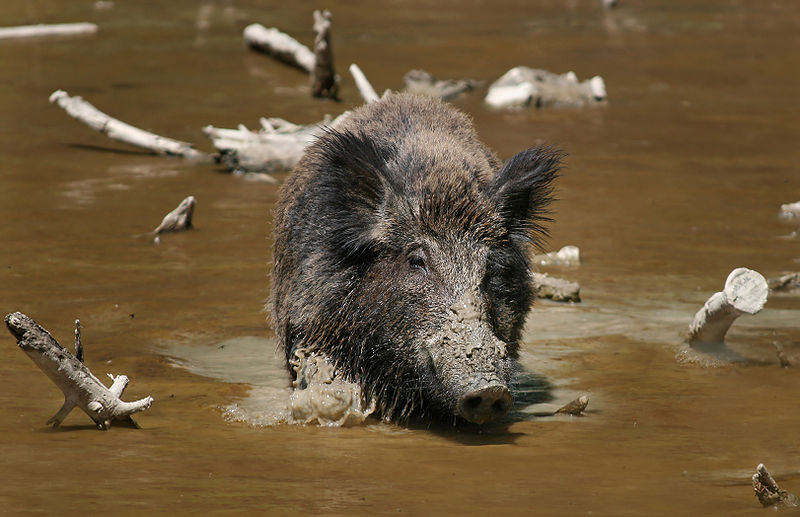|
Tami Nadu - Wildlife of Tamil Nadu - Wild boa at Tamil Nadu
Wild boa at Tamil Nadu
Wild boar is a species of pig, including at least 16 subspecies, and part of the biological family Suidae. It is the wild ancestor of the domestic pig, an animal with which it freely hybridises. Wild boar are native across much of Northern and Central Europe, the Mediterranean Region (including North Africa's Atlas Mountains and much of Asia as far south as Indonesia. Populations have also been artificially introduced in some parts of the world, most notably the Americas and Australasia; principally for hunting. Elsewhere, populations have also become established after escapes of wild boar from captivity.
|
 |
Behavior/social structure
Adult males are usually solitary outside of the breeding season, but females and their offspring (both sub-adult males and females) live in groups called sounders. Sounders typically number around 20 animals, although groups of over 50 have been seen, and will consist of 2 to 3 sows; one of which will be the dominant female. Group structure changes with the coming and going of farrowing females, the migration of maturing males (usually when they reach around 4 years old) and the arrival of unrelated sexually active males.
Wild boar are usually crepuscular, foraging from dusk until dawn but with resting periods during both night and day. They eat almost anything they come across, including grass, nuts, berries, carrion, roots, tubers, refuse, insects, small reptiles. Wild boar are also known to predate on young deer and lambs. This has not been reported in the UK, but is a common problem in Australia.
Boars are the only hoofed animals known to dig burrows.
If surprised or cornered, a boar (and particularly a sow with her piglets) can and will defend itself and its young with intense vigor. The male lowers its head, charges, and then slashes upward with his tusks. The female, whose tusks are not visible, charges with her head up, mouth wide, and bites. Such attacks are not often fatal to humans, but may result in severe trauma, dismemberment, or blood loss.
|
